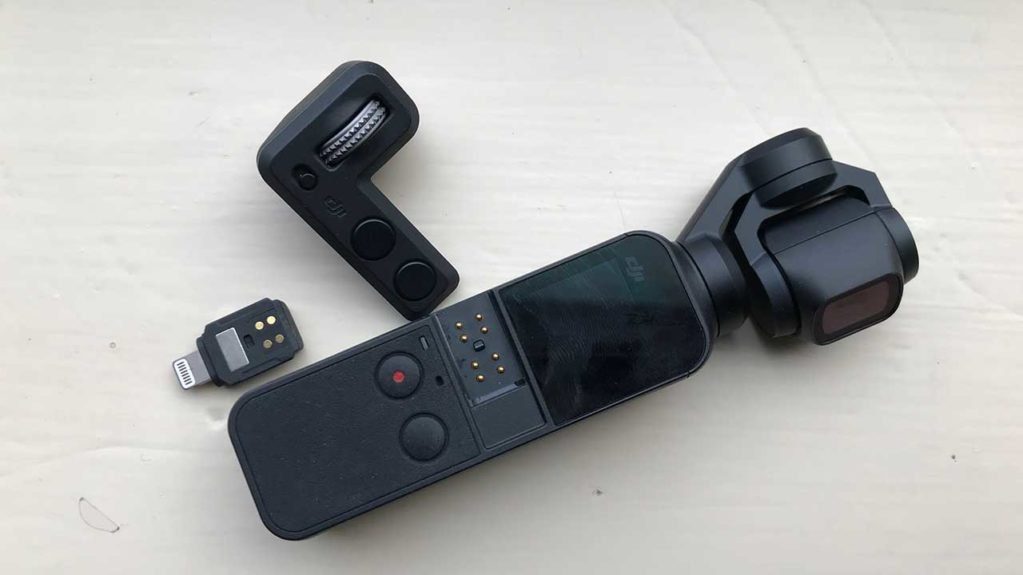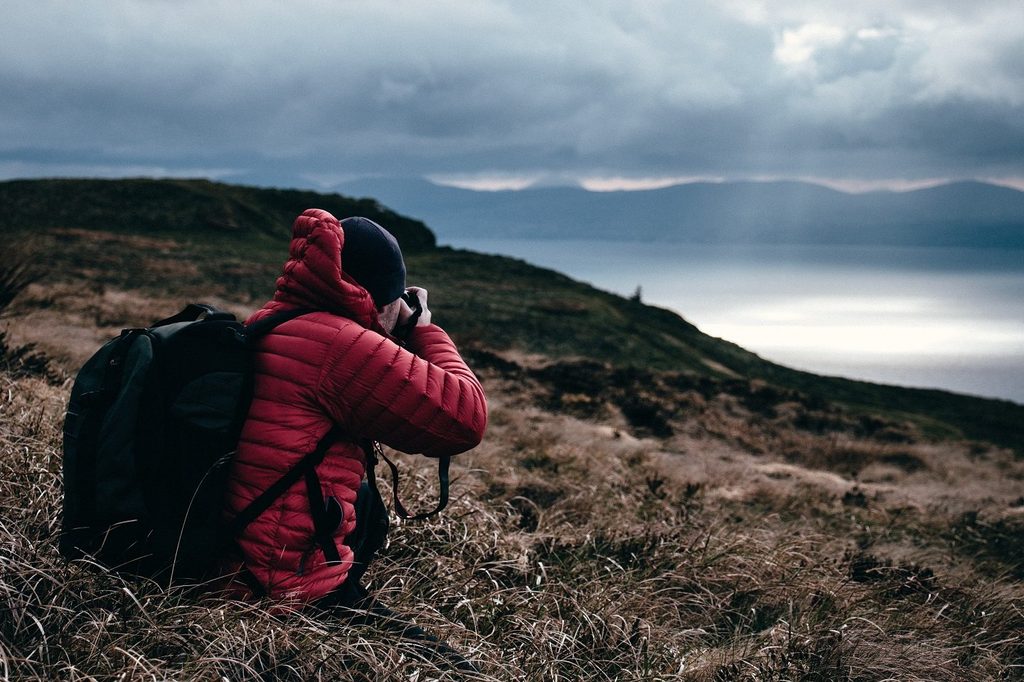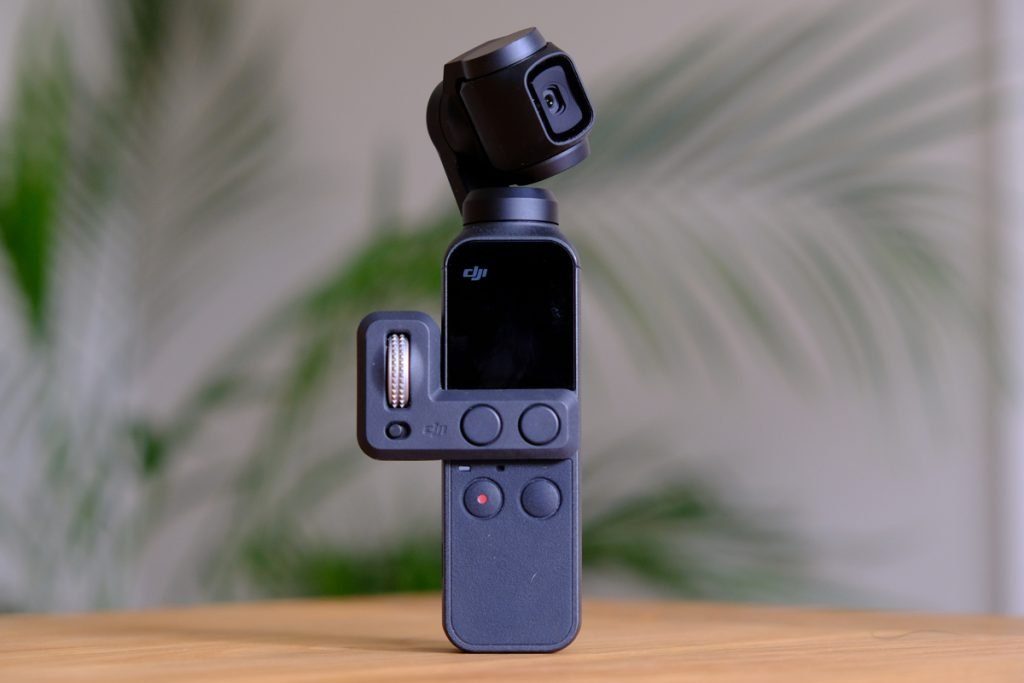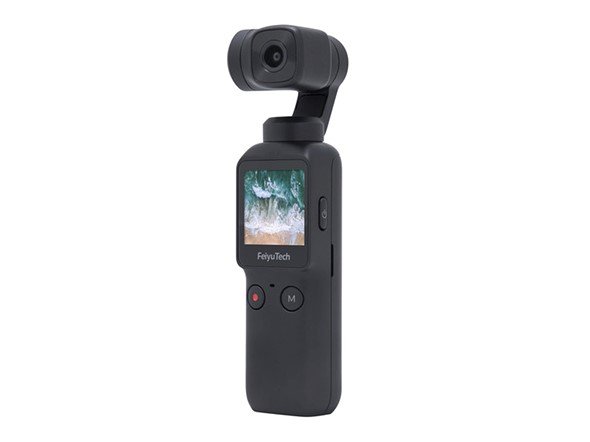Table of Contents:
Throughout the ages, people have wanted to capture special moments and people in their lives. Before the creation of the first camera, this was done through portraits and paintings. Since the camera was invented and brought into production, there has been a steady stream of photographic tools brought into the market, each one better than the last.
In the last ten years alone there has been significant progress in the kinds of cameras that we see on the market, from built in cell-phone cameras to highly advanced hand-held cameras. The progression can be seen not only in the quality of the photographs that the cameras take, but also in the size of the cameras being used.
We have gone from black and white photographs taken with a big and bulky camera on a tripod, to scores of high-end cameras and a multitude of digital photos taken with small, and very compact, cell-phones.
In this article, however, we will discuss the pros and cons of both the DJI Osmo Pocket and the Feiyu Pocket. These two little (and they are little!) gadgets are the two top of the range pocket cameras in their field, in an increasingly competitive market. As with all things in the market, there are good points and not-so-good points for each of these, our two competitors.
We will discuss all of the technical points of each of these two products, as well as the merits of purchasing one or the other of them. As we go through these points, it should become apparent which one is the better deal.
These compact pocket cameras are ideal for traveling because of their ease of use and, being so small and lightweight, they can be carried along wherever you go without taking up much space. So without further ado, let’s introduce these two nifty travel companions and see how they compare!
The DJI Osmo Pocket
The DJI Osmo Pocket is the latest in the DJI Osmo range and it is a pocket-sized gadget that is ideal for vloggers, enabling them to do filmmaking on the professional level.
The Osmo Pocket weighs a mere 116g (or four ounces), looks about the size of a small chocolate bar and has at its core a combination of the three axis gimbal stabilizing technology as well as a camera with all the extra modes.
The built-in stabilizer allows you to walk the walk whilst you talk the talk.
Whenever you turn the Osmo camera on, the little gimbal does a mini yoga stint, turning its head first one way and then the other with a small clicking sound, almost as if it were stretching after just waking up.
Underneath the camera there are two buttons, one of which is multifunctional and the other is used to record videos or take photos. In lieu of the fact that the Osmo Pocket is so tiny, the LED touch screen is a mere one inch in size.
It also comes with a pair of small, removable connectors (one of which is a USB-C and the other a Lightning) which attach to the camera.
These allow you to connect the Osmo Pocket to the bottom of your phone — it’s connected so that your phone is held horizontally — and you then have the ability to control the camera using your phone’s touch-screen or, you can even transfer data. Even better, when you aren’t using the connector, you just flip it around and slot it back in so that it doesn’t protrude.

The Osmo Pocket can shoot stabilized 4K video footage at 30 or 60 fps (frames per second). Added to that, you can also shoot in slow-motion 1080p at 120 fps. The photo modes include single shot, panorama, time lapse and also motion lapse.
It really is hard to imagine that so many features can be packed into something quite this small; nevertheless, this captivatingly brilliant device contains all of the following specifications:
DJI Osmo Pocket Specs:
- Sensor: 1/2.3″ CMOS
- Resolution: 12-megapixels
- Video: 4K 60fps, 1080p 120fps
- Video Max Bitrate: 100Mb/sec MP4
- Storage: microSD (max 256GB)
- Stills: 12-megapixel (4000 x 3000)
- Angle of View: 80°
- Max Aperture: f/2
- LCD: 1.08″ Touch-screen
- Shutter speed: 1/8000 – 8 sec
- ISO: 100-3200
- Built in microphone: Yes
- Wi-Fi: Optional (requires module)
- Tripod Mount: None
- USB: USB 2.0 Type C
- Microphone Input: No (3.5mm audio adapter available, USB-C to mini-jack input)
- Battery Charge Time: 1.25 hours (over USB)
- Dimensions: 121.9 x 36.9 x 28.6 (4.8 x 1.5 x 1.1″)
- Weight: 116g (4.09oz)
To sum up everything that has been stated, providing seamlessly smooth footage is something that the Osmo Pocket does which no smart-phone can do of and by itself. This makes it a really useful tool and one which provides definite value for money.
There are one or two points which count against this nifty little gadget, though. One of those points is that the sound quality on the video does not match up to the quality of the video footage itself. This is a shame, considering. But you can now buy a 3.5mm audio adapter that converts USB-C to a mini-jack input.
Another point against it, is that it is not particularly rugged (or waterproof) so it would probably not be a good idea to take it white-water rafting or skiing. Added to that, the screen is …well, tiny. Someone with slightly larger fingers may find it quite hard to operate the touch screen.
The last points against it are that, whilst it shoots in vibrant colors, the low-light performance is not very good and it also doesn’t have a Wi-Fi function, which is a bit disappointing.
Beyond that, however, there really isn’t much else that can be said to be negative about this Osmo Pocket. It is a very handy and useful tool, especially for the growing YouTube and Instagram generation.
The Feiyu Pocket
FeiyuTech have made their own version of the DJI Osmo Pocket and it is remarkably similar in looks. In fact, it could be almost an exact replica; barring the fact that they have chosen to have a built in integrated USB-C port on the side instead of an extension, as well as a slightly larger screen measuring 1.3 inches, compared to the slightly smaller one inch screen on the Osmo Pocket.
As you can see, the two products are vastly similar in looks, but when we take a look under the hood, there are some noticeable differences.
The specifications for the Feiyu Pocket include the following:
Feiyu Pocket Specs:
- Sensor: 1/2.5″ CMOS
- Resolution: 8.5-megapixels
- Video: 4K 60fps, 1080p 120fps, 720p 240fps
- Video Max Bitrate: 120Mb/sec MP4
- Storage: microSD (max 512GB)
- Stills: 8-megapixel (3840 x 2160)
- Angle of View: 120°
- Max Aperture: f/2.8
- LCD: 240 x 240 1.3″ Touch-screen
- Shutter speed: 1/8000 – 16 sec
- ISO: 100-3200
- Built in microphone: Yes
- Wi-Fi: Yes
- Tripod Mount: Yes (1/4-20″)
- USB: USB 2.0 Type C
- Microphone Input: No
- Battery Charge Time: 1.2 hours (over USB)
- Dimensions: 124.5 x 40.5 x 30mm (4.9 x 1.6 x 1.2″)
- Weight: 115g (4.06oz)
So as you can see, there are a few little added surprises in the Feiyu Pocket which make it a little different from its rival, the DJI Osmo Pocket. For example, the Wi-Fi connectivity is a lovely bonus, which was disappointingly missing in its rival. It also has a larger angle of view and a slightly larger touch-screen, which again is very useful.
However, while it has these added benefits, there are some features which are lacking. For example, the still image quality and color science is missing in the Feiyu Pocket, as it only has an 8MP camera, whereas the Osmo Pocket has a 12MP camera, although it does have the same 4K output video. The color on the Feiyu Pocket is also not as vivid as the Osmo Pocket.
The Feiyu is a much more affordable pocket camera, though, which does count in its favor, to be sure. However, if you are a serious vlogger and are looking for a longer-term investment, it certainly does appear that the DJI Osmo Pocket would be the recommended buy.
The Choice Is Ultimately Yours …
The conclusion is that, after comparing both of these cameras and delving into their on-board components, we are left with the decision of whether to go with the rather pricy DJI Osmo Pocket, or to go with the slightly cheaper Feiyu Pocket.
Considering DJI’s amazing firmware updates, the shear amount of accessories, and the pre-configured settings we are siding with the DJI Osmo Pocket. The device may be a little more expensive but DJI has proven to continually update and improve the device.
Both of these little handheld devices have many good points to recommend them but, at the end of the day, the choice is yours. As always, if you have any kind of questions at all about the DJI Osmo Pocket or Feiyu Pocket, strongly consider reaching out to HelpCloud Technicians for remote support.


